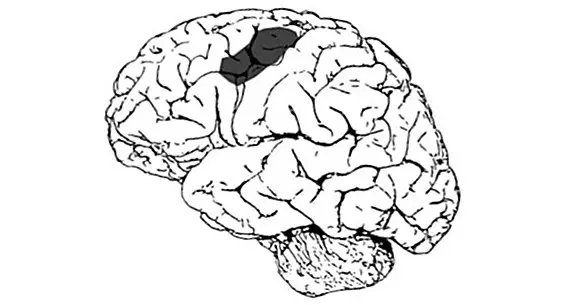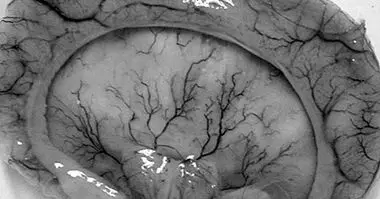Transcortical aphasia (sensory, motor, and mixed)
One of the most characteristic disorders of brain damage is aphasia, which is defined as alteration in the ability to understand and / or produce oral and written language . There is a special type of aphasia that is characterized by maintaining the ability to repeat words that have been heard; it is about transcortical aphasias.
In this article we will describe the main characteristics of the three types of transcortical aphasia : the sensory, the motor and the mixed. By way of introduction, we will briefly explain the general features of aphasias, especially transcortical ones.
- Related article: "Aphasias: the main language disorders"
What is transcortical aphasia?
Aphasias are language disorders that appear as a result of injuries in regions of the left hemisphere of the brain related to speech , as well as with reading and writing. However, in some people the language is more distributed between the two hemispheres, as is the case with left-handers, and the left is not the dominant one.
The most frequent causes of aphasia are ischemic strokes, traumatic brain injuries and neurodegenerative diseases, including dementias.
In the context of aphasia the term "transcortical" refers to the appearance of damage in several lobes of the brain that isolate some nerve pathways and structures related to language. The function of these regions is preserved, which explains the symptomatic peculiarities of these aphasias.
The signs of transcortical aphasias vary greatly depending on the type to which we refer (sensory, motor or mixed). However, the three types of transcortical aphasia present as a common feature the maintenance of the ability to repeat words or phrases that have been pronounced by other people.
This characteristic distinguishes transcortical aphasias from other variants of this disorder, particularly Broca's or motor's aphasia, Wernicke's or sensorial aphasia, conduction and global or total aphasia. Beyond this, The usual signs of transcortical aphasias are similar to those of the rest .
- You may be interested: "The 8 types of speech disorders"
Types of transcortical aphasia
Three types of transcortical aphasia have been distinguished according to the relative predominance of symptoms and signs related to comprehension and to the production of language.
Thus, we found transcortical sensory, motor and mixed aphasia, in which the two types of alteration are present to a severe degree.
1. Sensory
Transcortical sensory aphasia is characterized by a deficient understanding of language , whether it manifests itself in speech or in reading, as well as the maintenance of verbal fluency. These signs are very similar to those of Wernicke's aphasia, although in this the repetition is altered.
Both in Wernicke's aphasia and in the transcortical sensory the phoneme articulation is correct, although the discourse tends to be full of meaningless terms (neologisms) as well as unnecessary syllables and words (paraphasias) that make sense of verbal production.
This type of aphasia It is associated with lesions in the lower part of the junction between the temporal, parietal and occipital lobes , which correspond to areas 37 and 39 of the classification made by Brodmann. In this part of the brain we find the Sylvian fissure or lateral groove of the brain, one of its most important folds.
Contusions and hemorrhages in the left temporal lobe and infarcts in the posterior cerebral artery of the same hemisphere are common causes of transcortical sensory aphasia.
2. Motor
Transcortical motor aphasia it is also known as "dynamic aphasia" and "anterior isolation syndrome" . It occurs as a consequence of lesions in the pars triangularis of the inferior turn of the frontal lobe (Brodmann area 45) or other parts of the dominant hemisphere for language.
These cases are characterized by the conservation of the abilities to name objects, understand the language and repeat words that are heard, as well as by the presence of various alterations in the production of speech.
In motor transcortical aphasia there is a reduction in the initiative to speak, accompanied by phenomena associated with repetition and imitation of words pronounced by other people or by oneself, mainly perseveration, echolalia and palilalia.
The fluency of the discourse is normal when the person repeats words and phrases or when he calls objects, although he is much less so during spontaneous speech.
3. Mixed
Mixed aphasias are those that present significant motor symptoms (that is, those related to the production of language and writing) but also sensory (reception and understanding of speech and reading).
We speak of mixed transcortical aphasia when these signs occur without jointly appearing an alteration in the ability to repeat words and phrases. Otherwise we would be referring to global aphasia, which is associated with very extensive lesions of the left hemisphere of the brain.
In this case lesions appear in the frontal and parietal lobes of the left hemisphere , although the fundamental regions for the language are not affected. This is why this type of aphasia is sometimes referred to as "language isolation syndrome".
As in transcortical motor aphasia, in the mixed fluidity is also normal to repeat but is very altered in spontaneous emission. Echolalia and other similar involuntary repetitions are also detected.



















